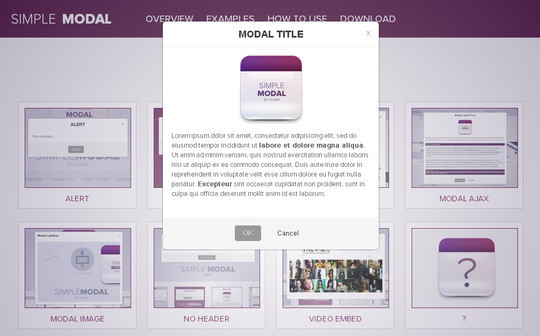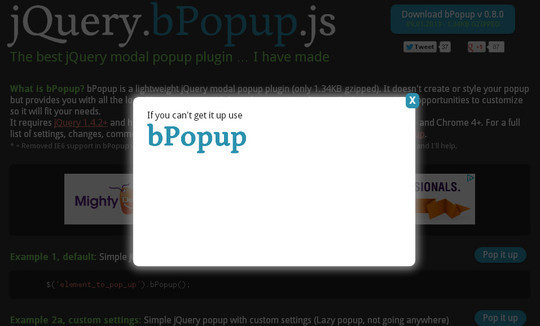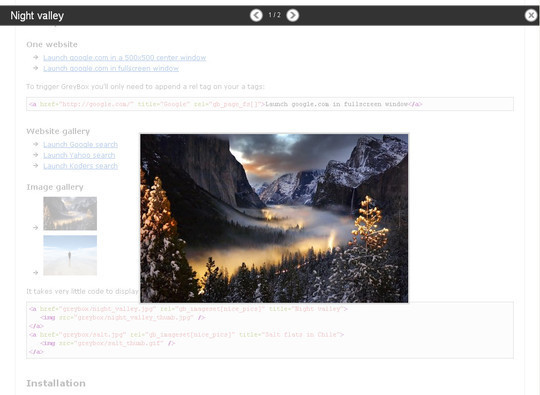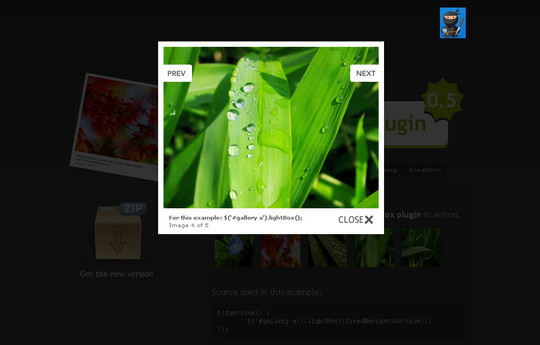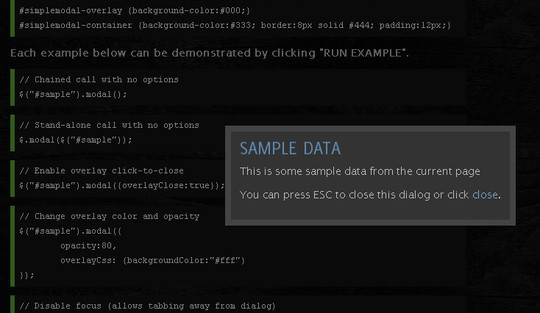13 Very Useful jQuery Modal Plugins
http://www.smashingapps.com/2013/03/14/13-very-useful-jquery-modal-plugins.html
Avgrund is a jQuery plugin for modal boxes and popups. It uses interesting concept showing depth between popup and page. It works in all modern browsers and gracefully degrade in those that do not support CSS transitions and transformations (e.g. in IE 6-9 has standard behavior).
FancyBox is a tool for displaying images, html content and multi-media in a Mac-style “lightbox” that floats overtop of web page.
SIMPLEMODAL is a small plugin to create modal windows. It can be used to generate alert or confirm messages with few lines of code. Confirm configuration involves the use of callbacks to be applied to affirmative action; it can work in asynchronous mode and retrieve content from external pages or getting the inline content. SIMPLEMODAL is not a lightbox although the possibility to hide parts of its layout may partially make it similar.
Lightview was built to change the way you overlay content on a website.
bPopup is a lightweight jQuery modal popup plugin (only 1.34KB gzipped). It doesn’t create or style your popup but provides you with all the logic like centering, modal overlay, events and more. It gives you a lot of opportunities to customize so it will fit your needs.
Bare bones modal dialog windows.
jQuery Superbox! is a script which allows you display windows with the lightbox effect.
Highslide JS is an image, media and gallery viewer written in JavaScript.
GreyBox can be used to display websites, images and other content in a beautiful way.
Reveal: jQuery Modals Made Easy
Reveal is awesome because it’s easy to implement, is cross-browser compatible with modern browsers (with some graceful degradation of course) and lightweight coming in at only 1.75KB. What that means for you is that it’s fast, sexy and just works. Now let’s see how easy is can be to get Reveal working!
jQuery lightBox plugin is simple, elegant, unobtrusive, no need extra markup and is used to overlay images on the current page through the power and flexibility of jQuery´s selector.
PrettyPhoto is a jQuery lightbox
prettyPhoto is a jQuery lightbox clone. Not only does it support images, it also support for videos, flash, YouTube, iframes and ajax. It’s a full blown media lightbox.
SimpleModal is a lightweight jQuery Plugin which provides a powerful interface for modal dialog development. Think of it as a modal dialog framework. SimpleModal gives you the flexibility to build whatever you can envision, while shielding you from related cross-browser issues inherent with UI development.
Read more: http://www.smashingapps.com/2013/03/14/13-very-useful-jquery-modal-plugins.html#ixzz2Nqjjf8ZL
'프로그래밍 > Script' 카테고리의 다른 글
| [jQuery] Collection of jQuery Drag and Drop Plugins (0) | 2013.03.20 |
|---|---|
| [javascript] Image Upload with Preview and Delete & mobile (0) | 2013.03.19 |
| [javascript] Holder.js (0) | 2013.03.11 |
| [javascript] css3 video player , html5, javascript (0) | 2013.03.07 |
| [JAVASCRIPT] Galleria — A responsive JS image gallery framework (0) | 2013.02.28 |



